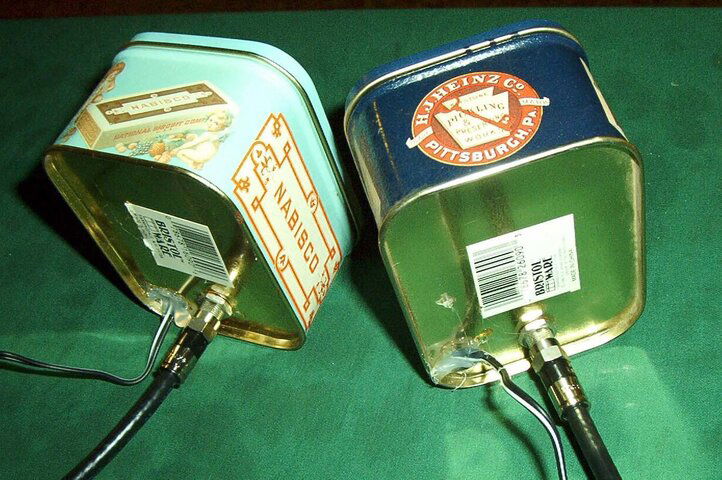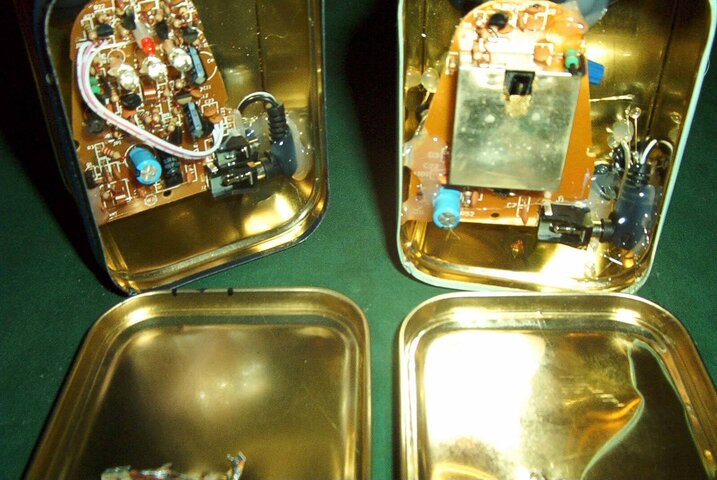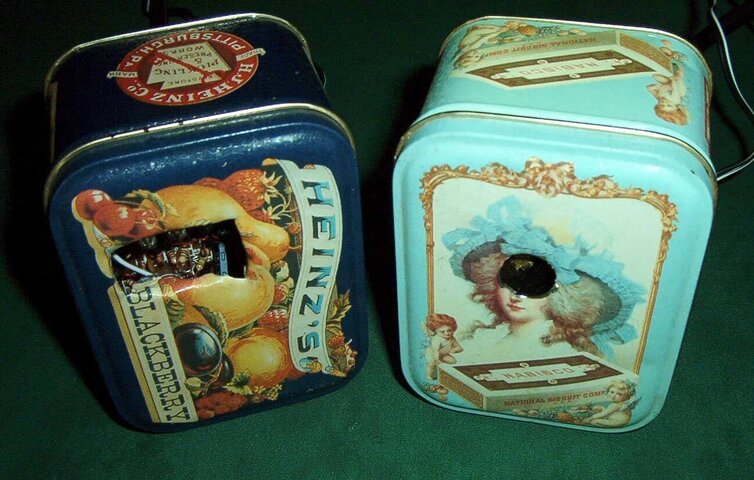Well I got my BSC621-2 working just fine and 370 channels.
I got some pretty good channels and besides being able to see these in my living room, I wanted to see them in the bedroom...
So I connected the bedroom TV and installed "B" speakers from my stereo to get AC-3 sound, then dragged out my old Terk "Leap Frog" Extended Wireless Remote.
The Leap Frog worked, but when it was on, I could no longer use the remote in the living room with the Mercury II unless I unplugged the Leap Frog. It was jamming the Mercury II. Plus I needed a clear line of sight since it would not go through my wood walls.
Thinking that Terk would have solved these problems with their newest product, I ordered a Terk LF-IRX "Remote Anywhere" remote control extender. This worked WORSE than my old Leap Frog! Not only did it jamb my Mercury II like the old Leap Frog, but I had to put the receiver up close to my entertainment center and hold my remote a few feet from the transmitter or it would not work. Same problem with clear line of sight needed.
So I tried a different brand... I got a Jensen JDSC-IR100A wireless remote control extender. This would work further away (receiver from entertainment center and remote from transmitter), but I had to have the transmitter in the same room as the receiver to get it to work!
Hummm....
I noticed all 3 remote extenders had an LED which would light when I was clicking on my remote. And that the red LED was flashing on and off even when I was not clicking on my remote...
Problem 1: I had a theory that there was some sort of RF noise in my area and none of the wireless remote extenders were built well enough to filter this out. And this is what was making the LED flash constantly.
Problem 2: Jamming Fortec Mercury II. My theory was that this was caused by problem 1. A constant stream of IR light bombarding the receiver, therefore it could not "see" a valid remote command in the living room.
Problem 3: None of the wireless extenders could transmit through my wood walls (old house).
So I decided to take the Jensen units apart and see what was inside. On the receiver unit, I saw there were 3 "transmitting" LED's and a jumper wire was blocking one of them. But they looked promising! I moved the jumper wire so the 3rd LED was no longer blocked. On the transmitter, there was a Faraday cage on the circuit board and a wire screen over the light receiver. I removed the wire screen so it could see the remote better.
My Experiment.... I removed the antennas and left the wires to the antennas attached to the circuit boards. Then I ran a coax cable along the floor from my bedroom to the living room. I exposed the center conductor of the coax which I attached to the antenna wires. Then I placed aluminum foil over the receiver so it was covered all around except for where the IR light came out.
Then I powered up the units and everything worked! No more problems. No more jamming. The LED on the receiver was off when I was not sending remote commands. I was able to use the remote in my bedroom far away from the transmitter which was across the room! And I could place the receiver all the way across the room from my entertainment center.
I removed the aluminum foil and the flashing LED problem returned. Placed foil back over unit and light went out.
So that was the solution, basically build a faraday cage around the whole works - transmitter, receiver, and the transmissions between the two. And by doing so, keep all that outside RF noise out.
So I needed two metal boxes to put the transmitter and receiver in. Then needed two coax connectors to attach the coax cable to the boxes.
I went to my local 2nd hand store and found two small tin cookie/candy boxes. 50 cents each. And I found an old cable TV box which had 4 coax connectors on the back - $2.
Then I went home and unsoldered the coax connectors from the cable box, drilled holes in the tin boxes, and installed the connectors and circuit boards. Then drilled holes in the covers for the light receiver (transmitter) and IR LED's (receiver).
Then attached the coax, powered them up, and they work perfect. I basically have the entire works (including the communications between the two), shielded from any outside noise via the tin boxes and the shielding on the coax, which is connected to the tin boxes.
Here are pictures...
Jensen transmitter out of the box.
Aluminum foil test
Back of tin boxes
Inside of tin boxes
Finished boxes
I got some pretty good channels and besides being able to see these in my living room, I wanted to see them in the bedroom...
So I connected the bedroom TV and installed "B" speakers from my stereo to get AC-3 sound, then dragged out my old Terk "Leap Frog" Extended Wireless Remote.
The Leap Frog worked, but when it was on, I could no longer use the remote in the living room with the Mercury II unless I unplugged the Leap Frog. It was jamming the Mercury II. Plus I needed a clear line of sight since it would not go through my wood walls.
Thinking that Terk would have solved these problems with their newest product, I ordered a Terk LF-IRX "Remote Anywhere" remote control extender. This worked WORSE than my old Leap Frog! Not only did it jamb my Mercury II like the old Leap Frog, but I had to put the receiver up close to my entertainment center and hold my remote a few feet from the transmitter or it would not work. Same problem with clear line of sight needed.
So I tried a different brand... I got a Jensen JDSC-IR100A wireless remote control extender. This would work further away (receiver from entertainment center and remote from transmitter), but I had to have the transmitter in the same room as the receiver to get it to work!
Hummm....
I noticed all 3 remote extenders had an LED which would light when I was clicking on my remote. And that the red LED was flashing on and off even when I was not clicking on my remote...
Problem 1: I had a theory that there was some sort of RF noise in my area and none of the wireless remote extenders were built well enough to filter this out. And this is what was making the LED flash constantly.
Problem 2: Jamming Fortec Mercury II. My theory was that this was caused by problem 1. A constant stream of IR light bombarding the receiver, therefore it could not "see" a valid remote command in the living room.
Problem 3: None of the wireless extenders could transmit through my wood walls (old house).
So I decided to take the Jensen units apart and see what was inside. On the receiver unit, I saw there were 3 "transmitting" LED's and a jumper wire was blocking one of them. But they looked promising! I moved the jumper wire so the 3rd LED was no longer blocked. On the transmitter, there was a Faraday cage on the circuit board and a wire screen over the light receiver. I removed the wire screen so it could see the remote better.
My Experiment.... I removed the antennas and left the wires to the antennas attached to the circuit boards. Then I ran a coax cable along the floor from my bedroom to the living room. I exposed the center conductor of the coax which I attached to the antenna wires. Then I placed aluminum foil over the receiver so it was covered all around except for where the IR light came out.
Then I powered up the units and everything worked! No more problems. No more jamming. The LED on the receiver was off when I was not sending remote commands. I was able to use the remote in my bedroom far away from the transmitter which was across the room! And I could place the receiver all the way across the room from my entertainment center.
I removed the aluminum foil and the flashing LED problem returned. Placed foil back over unit and light went out.
So that was the solution, basically build a faraday cage around the whole works - transmitter, receiver, and the transmissions between the two. And by doing so, keep all that outside RF noise out.
So I needed two metal boxes to put the transmitter and receiver in. Then needed two coax connectors to attach the coax cable to the boxes.
I went to my local 2nd hand store and found two small tin cookie/candy boxes. 50 cents each. And I found an old cable TV box which had 4 coax connectors on the back - $2.
Then I went home and unsoldered the coax connectors from the cable box, drilled holes in the tin boxes, and installed the connectors and circuit boards. Then drilled holes in the covers for the light receiver (transmitter) and IR LED's (receiver).
Then attached the coax, powered them up, and they work perfect. I basically have the entire works (including the communications between the two), shielded from any outside noise via the tin boxes and the shielding on the coax, which is connected to the tin boxes.
Here are pictures...
Jensen transmitter out of the box.
Aluminum foil test
Back of tin boxes
Inside of tin boxes
Finished boxes






